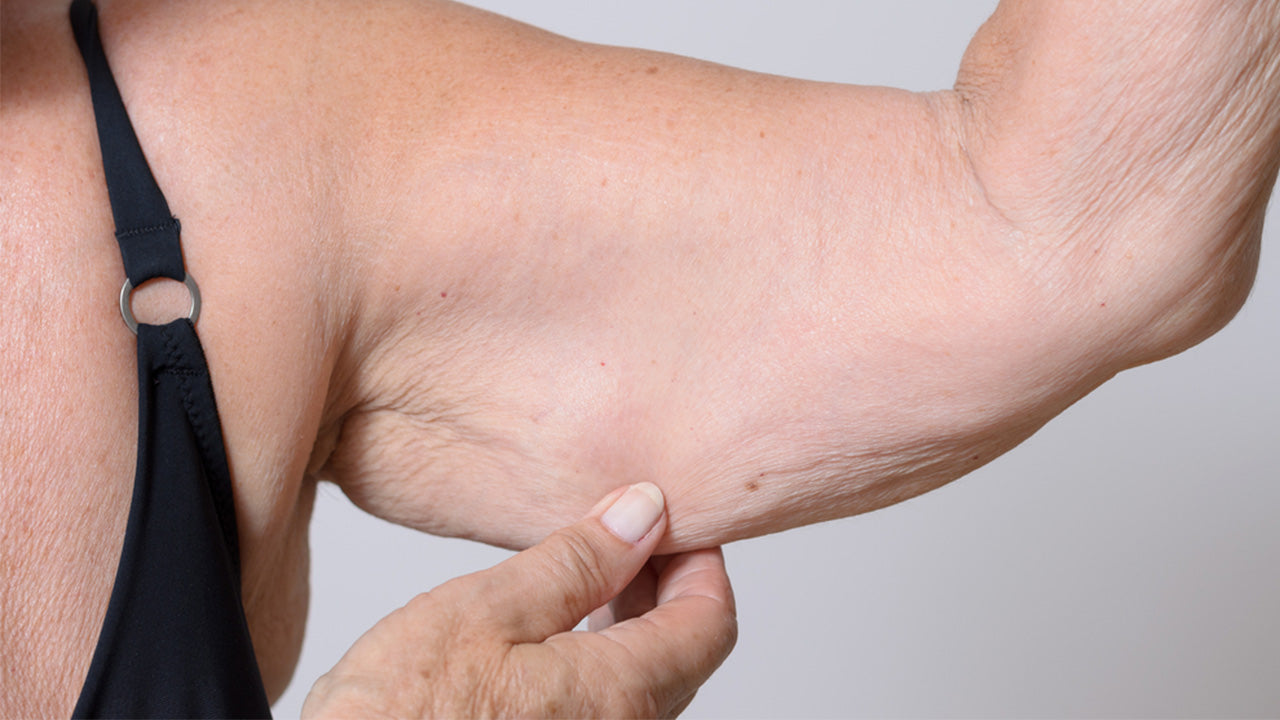Barrett’s Esophagus: Symptoms, Causes and Protecting Yourself from Cancer
 By: by Amino Science
By: by Amino Science

Barrett’s esophagus is a condition in which the normal lining of the esophagus is replaced by tissue similar to that lining the intestines. According to at least one estimate, the disorder may affect as many as 18 million Americans. Unfortunately, while Barrett’s can sometimes lead to the development of cancer of the esophagus, health care providers believe only a fraction of people with the condition are actually aware they have it.
If you’re concerned about your esophageal health, read on to learn about the symptoms and causes of Barrett’s esophagus and what you can do to protect yourself from esophageal cancer.
Causes of Barrett’s Esophagus
While the exact cause is unknown, Barrett’s esophagus is most often seen as a complication of long-standing gastroesophageal reflux disease (GERD)—the condition in which stomach acid washes back, or refluxes, into the esophagus. However, Barrett’s may also be seen in people who’ve never experienced symptoms of GERD.
Symptoms of Barrett’s Esophagus
Interestingly, the tissue changes that occur with Barrett’s esophagus cause no symptoms on their own, so any symptoms that might be experienced will be related to GERD. Symptoms of GERD to watch out for include:
- Regurgitation of stomach contents
- Frequent heartburn
- Trouble swallowing
- Chest pain
If you’ve been diagnosed with GERD or are experiencing ongoing symptoms of acid reflux, don’t hesitate to contact your health care provider for a consultation.
Risk Factors for Barrett’s Esophagus
Beyond its association with long-standing GERD, the risk of developing Barrett’s esophagus is also higher among certain groups. Risk factors that contribute to your chances of developing the condition include:
- Sex: According to the National Institute of Diabetes and Digestive and Kidney Diseases (NIDDK), men develop Barrett’s esophagus twice as often as women.
- Age: The average age at which Barrett’s is diagnosed is 55.
- Race: Caucasians—especially white men—have a greater risk of Barrett’s than other races do.
- Weight: Those with obesity and increased fat around the abdomen have a greater risk of Barrett’s.
- Smoking: People with a current or past history of smoking run a greater risk of developing Barrett’s.
- Family history: Those with a family history of Barrett’s esophagus have a greater risk of developing the condition.

Barrett’s Esophagus and Cancer
The esophagus is lined with a type of mucosa that’s largely made up of squamous cells, which are flat cells similar to those seen on the surface of the skin. By contrast, intestinal mucosa is largely composed of goblet cells whose main purpose is to secrete a protective layer of mucus.
Each time stomach acid flows up into the esophagus, it damages the esophageal lining. And over time, the constant attempts by the esophagus to heal and protect itself can cause the normal squamous cells of the esophageal lining to be replaced by the goblet cells of the intestines. When this happens, it’s called intestinal metaplasia and is the hallmark of Barrett’s esophagus.
Although the risk is small, this Barrett’s tissue can sometimes become precancerous (dysplastic) or even cancerous. In fact, the National Institutes of Health (NIH) estimates that about 0.5% (or 1 in 200) of people with Barrett’s develop esophageal cancer each year.
The percentage of people with GERD who go on to develop Barrett’s esophagus is also relatively small, and those who do may have the condition for years before cancer develops. However, cancer of the esophagus is now considered the fastest growing cancer in the United States.
Moreover, people with Barrett’s are 30 to 125 times more likely to develop esophageal adenocarcinoma than those without the condition. It’s thus recommended that all individuals with GERD be regularly evaluated to check for the presence of Barrett’s.
Diagnosing Barrett’s Esophagus
In order to diagnose the presence of Barrett’s, an upper endoscopy must be performed. During an endoscopic procedure, a lighted, flexible tube with a camera on one end is passed down the throat and into the esophagus, where biopsies (tissue samples) are taken.
While normal esophageal tissue appears pale and glossy, in Barrett's esophagus, the tissue instead tends to appear red and velvety. However, in the early stages of the condition, it can be almost impossible to detect changes related to Barrett’s without a microscopic evaluation. Therefore, your health care provider will take biopsies from multiple areas of the esophageal lining.
After conducting a microscopic evaluation, your tissue samples may receive one of five classifications:
- Negative for dysplasia: If Barrett’s esophagus is found but no precancerous cells are present, the biopsy is deemed negative for dysplasia.
- Indefinite for dysplasia: If Barrett’s esophagus is found, but the cells are not abnormal enough to be considered dysplastic, the sample is considered indefinite for dysplasia.
- Low-grade dysplasia: A classification of low-grade dysplasia is given when the sample cells show small signs of precancerous changes.
- High-grade dysplasia: Considered the final stage before esophageal cancer, high-grade dysplasia refers to cells that appear very abnormal on examination.
- Intramucosal adenocarcinoma: A classification of intramucosal adenocarcinoma indicates the presence of esophageal cancer in the biopsy sample.
Treatment of Barrett’s Esophagus
Your health care provider’s recommendations for treatment of your Barrett’s esophagus will depend on your overall health and the extent of damage to your esophageal mucosa. However, treatment will most likely consist of some type of procedure in combination with medication, diet, and lifestyle changes.
Procedures
If you’ve been found to have no dysplasia or indefinite dysplasia, treatment will most likely include a follow-up endoscopic examination in a year and periodic examinations thereafter to monitor for any changes in your esophageal mucosa.
If you’ve been found to have low-grade dysplasia, an endoscopic mucosal resection to remove abnormal cells or radiofrequency ablation to remove abnormal tissue may be recommended.
While esophagectomy—the removal of part or all of the esophagus—was once considered the treatment of choice for both high-grade dysplasia and intramucosal adenocarcinoma, the procedure carries with it substantial risks, including higher rates of death and complications and lowered quality of life.
Consequently, because esophageal cancer is associated with low rates of metastasis, most health care providers now choose to use less invasive techniques, including:
- Endoscopic mucosal resection to remove superficial cancer
- Endoscopic submucosal dissection to remove cancer involving deeper layers of the mucosa
- Radiofrequency ablation to remove abnormal tissue with heat
- Cryotherapy to freeze abnormal cells
- Photodynamic therapy to destroy damaged cells with light
Medication, Diet, and Lifestyle Changes
As GERD is most often associated with the development of Barrett’s esophagus, managing its symptoms is an integral part of preventing the damage that can lead to Barrett’s.
To reduce the amount of acid produced by the stomach and help prevent further damage to the esophagus, your health care provider may prescribe an acid suppression medication. Proton pump inhibitors (PPIs) are the most commonly prescribed class of drugs for this purpose. Examples of this group include:
- Omeprazole (Prilosec)
- Lansoprazole (Prevacid)
- Pantoprazole (Protonix)
It should be noted that these drugs come with their own risks of serious side effects, including decreased absorption of calcium and magnesium and increased risk of infections. Early studies also reported a link between long-term PPI use and increased risk of dementia, though later studies have resulted in mixed findings.
Regardless, to decrease symptoms of GERD over the long run and increase quality of life, dietary changes should be initiated as well. Some of these changes include:
- Eating smaller, more frequent meals
- Avoiding high fat, fried, spicy, or acidic foods
- Eating plenty of fruits, vegetables, lean meats, and whole grains
- Avoiding caffeine, alcohol, carbonated beverages, and chocolate
- Supporting lean body mass with essential amino acids
Finally, certain additional lifestyle changes can also help decrease GERD symptoms and aid esophageal healing. These include:
- Stopping use of tobacco products
- Maintaining a healthy weight
- Avoiding tight-fitting clothing or belts
- Raising the head of the bed 6 to 8 inches
If you or someone you care about has a family history of Barrett’s esophagus or has made diet and lifestyle changes and is still experiencing symptoms of GERD, be sure to speak with your health care provider about additional steps you can take to avoid damage to your esophagus and protect your long-term health.


Up to 25% off Amino
Shop NowJoin the Community
Comments (0)
Most Craveable Recipes




 833-264-6620
833-264-6620



















